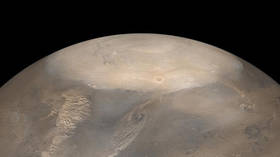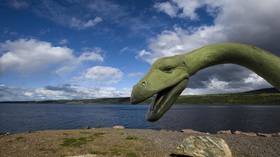No, there is not a parallel universe in Antarctica where time runs backwards

Mixed reports surrounding the possible discovery of a parallel universe in Antarctica have found their way into global news outlets in recent weeks. The initial stories were incorrect, so how did so many outlets get it wrong?
The actual source of the tale came from the April edition of New Scientist magazine. “We may have spotted a parallel universe going backwards in time” ran the feature in question, which reported the atypical results of a particle detection study in Antarctica.
The results of the experiment, named ANITA (Antarctic Impulsive Transient Antenna), could have implications for the antiverse theory, a theory which postulates that our universe could be the mirror image of an antimatter universe extending backwards in time before the Big Bang.
Confusion seems to have arisen from the fact that most reports were simply based on the first paragraphs of the initial article because it is behind a paywall. However, a more detailed reading reveals less-exciting results.
Also on rt.com One of Earth’s main planetary defense telescopes just spotted a NEW kind of ASTEROID… with a tailANITA involves a helium balloon flying 37,000 meters above the Antarctic ice sheet. At such a great height, ANITA can listen to the cosmos and detect high-energy particles, known as neutrinos, which are constantly colliding with the planet.
Neutrinos are subatomic particles that are one of the most abundant in the universe. They were first formed in the first second of the early universe, but are also continually being produced in the nuclear reactions of stars, like our sun, as well as nuclear reactions here on earth.
The Nobel Prize physicist Frederick Reines once described neutrinos as “the most tiny quantity of reality ever imagined by a human being.” Due to their minuscule size, neutrinos pose no threat to the objects they pass through. However, because of this, they rarely interact with actual matter, which means they are difficult to detect. When they do interact with matter, secondary particles are created, which allows us to identify them. It was such collisions which ANITA was observing.
Also on rt.com Phrenology is back, wrapped up with facial recognition in a 21st century pre-crime package by university researchers. Too soon?What was surprising about the findings was that, even as early as this month, a Russian study had results which indicated“that high-energy neutrinos are born in active galactic nuclei.” So, the fact that ANITA detected a handful of neutrinos coming from inside the Earth’s interior runs directly counter to our current understanding of the origins of these particles. This led to excited reports of a parallel universe to our own.
The possible existence of parallel universes came into being via quantum physics, a theory in physics that attempts to describe the fundamental properties of nature at an atomic level. Examining physics at this scale has birthed many strange discoveries over the years. If you shoot a single electron through a double slit, for example, you will know only the likelihood of where it will land, not the exact location, leading to theories that would usually be thought outside the realms of possibility.
One parallel universe theory — known as the many-worlds theory — states that all of the possible outcomes of where the electron might land do in fact happen, albeit in different universes, with each universe accounting for one outcome.
Also on rt.com Scientists develop new tool in fight against CANCERS and VIRUSES that sequences circular DNABut it is the antiverse theory that some hoped ANITA would help prove. The reports are not entirely wrong, in that these unexplained findings do not disprove the theory. But, in practice, neither do they prove it.
ANITA has been researching high-energy particles coming out of the ice of Antarctica for several years, and, although they still lack an explanation, there are other less-outlandish possible explanations for the strange findings. Speaking to CNET, Pat Scott, an astroparticle phenomenologist at the University of Queensland, explained that “Whilst parallel universes sound exciting and sexy when discussing the ANITA signal, alternative ideas are still on the table.” One theory, for example, speculates that it could be the Antarctic ice sheet itself which is producing the particles. With so much knowledge still unaccounted for in science, the ANITA findings are certainly not evidential of parallel universes.
This week, British author Douglas Murray told the TRIGGERnometry podcast that the coronavirus had revealed that “journalists are ill-prepared for discussions about virology & hard math.” Following the misreporting of the ANITA experiment, it seems that physics can be added to that list, too.
Like this story? Share it with a friend!














